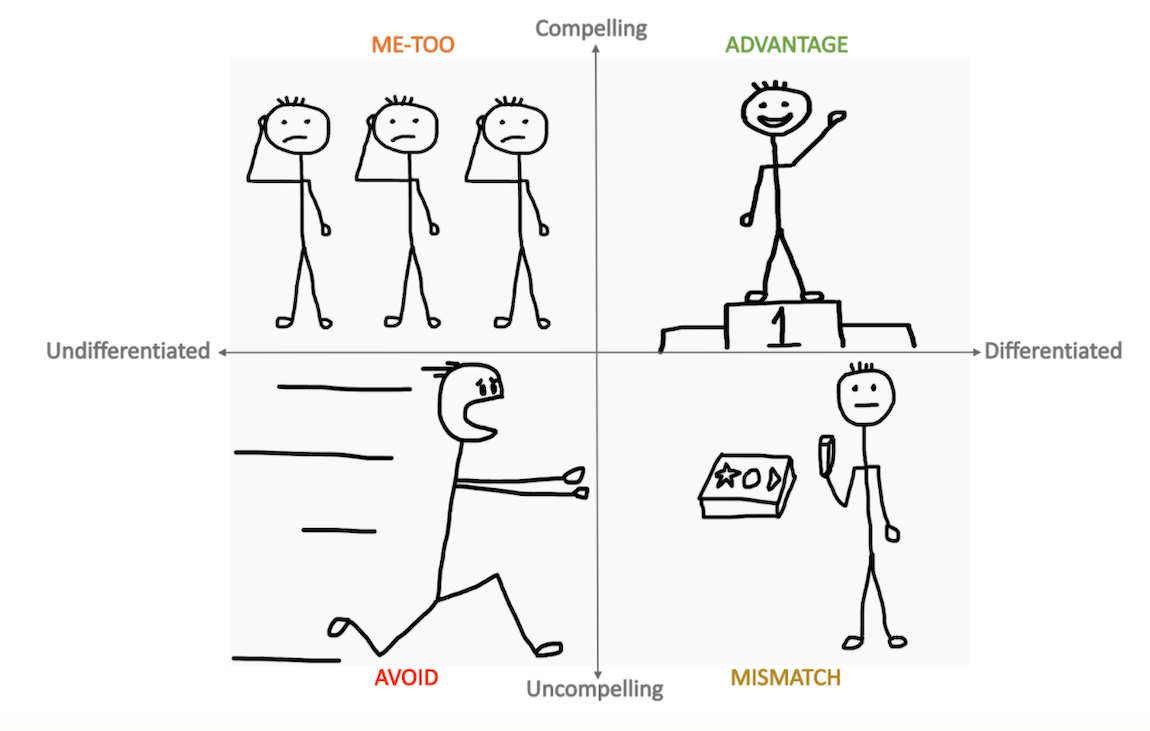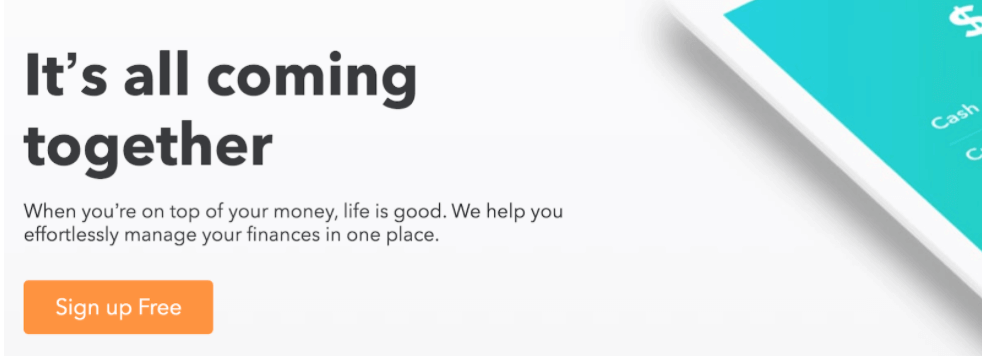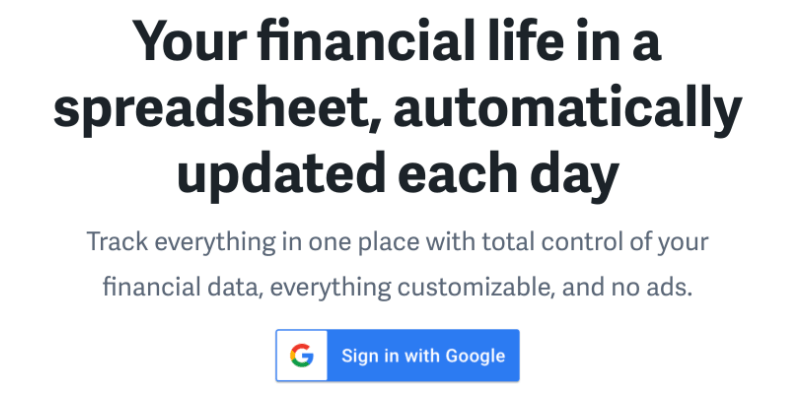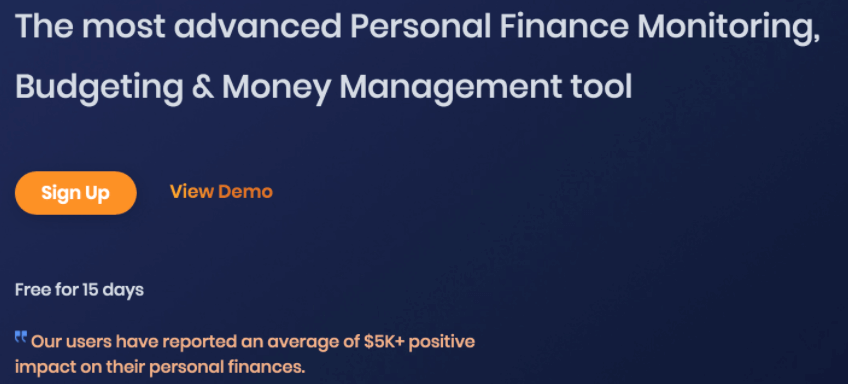Like any other field, product marketing has its set of tried and tested methods–market research, customer personas, buyer journeys, competitive analysis, ideal customer profile, positioning, messaging, and so on. All these come with well-known frameworks that deliver great results if used effectively. However, the often long and tedious journey from market research to product launch can leave product marketers feeling fatigued and unfocused. They can get lost in the weeds and lose sight of the big picture.
I was in a similar situation years ago when a mentor helped me take a step back and refocus. She gave me a mantra that is not really a secret, but one that marketers often forget. While the art of great product marketing cannot be reduced down to one single mantra, this definitely captures its core. And that phrase is: “compelling differentiated advantage.”
The components of a compelling differentiated advantage
Let’s break down this powerful phrase into its three key components.
Compelling
Great marketing is compelling. It resonates with our users and customers because it empathizes with them and talks about their challenges and aspirations. It speaks their language and reflects their point of view while also teaching them new ideas. Sometimes, it even challenges their approach. It compels them to listen, to think, and finally, to take action. It gives our customers the reason to buy.
Differentiated
Great marketing is differentiated. It articulates the unique benefits and value we deliver to our customers. It talks about why their current or expected approaches are ineffective or incomplete. At its best, it takes the customer action we have spurred with “compelling” and directs it in our favor. It gives our customers the reason to buy from us.
Advantage
Great marketing articulates an advantage and demonstrates how our product/service puts our customers in a winning position. It tells them a story about how they are going to overcome their challenges and realize their aspirations by partnering with us, painting a picture of a transformed world where they are wildly successful. It builds in our customers the desire to buy from us.
One might argue that marketing that is compelling and differentiated is bound to articulate an advantage. If true, this word “advantage” is superfluous, but the idea of articulating an advantage is certainly not.
Putting this phrase into action
Let’s look at how we put this mantra to use. I like to visualize ideas, so I couldn’t resist drawing this as a four-quadrant graph. To keep it simple, I chose to use “compelling” and “differentiated” as the two axes, with the implicit assumption that compelling and differentiated marketing also articulates an advantage. Let’s look at the four quadrants.
Advantage
This is marketing that is both compelling and differentiated (and articulates an advantage). Of course, this is where we want to be.
Avoid
This is marketing that is neither compelling nor differentiated. We obviously don’t want to be here. My personal preference is to find “compelling” first as it takes us much closer to the customer. However, finding “differentiated” might be more straightforward as it relies on product knowledge which is usually easier to find. I don’t think it matters much which we try to find first, because eventually, we need to find both.
Me too
This is marketing that is compelling but not differentiated. It does a good job of giving the customers reasons to buy, but not enough reasons to buy from us. To go from here to advantage, you should ask yourself:
- Do we understand our product well? Can we find and articulate our differentiation? Maybe we have already tried, but it does not hurt to re-examine.
- So, perhaps our product is a me-too product. We absolutely don’t want to be here, but what if we are? Can our superior customer service act as a differentiator?
- What about our expertise in this field? Can we act as a trusted advisor?
- Do we have a free trial? Can we talk about our pricing or promotions?
- Can we bundle it with a different product/service to create unique value?
- Do we have partnerships with other vendors that might help tell a unique story?
Mismatch
This is marketing that is differentiated but not compelling. Unless we’ve built a unique but useless product (hope not!), this usually signals one or more of the following mismatches. To move to advantage, ask yourself:
- Are we matching our marketing to the right customer? Did we choose our ideal customer profile well? If we are creating differentiated marketing for the wrong customer segment, it won’t be compelling.
- Are we matching our marketing to the right customer pain points? Often marketing is not compelling because we aren’t addressing the resonant pain points.
- Are we matching/aligning with our product management team? Are we asking them why we built this product? If we are having trouble creating compelling marketing, there is chance that there is a mismatch or lack of effective collaboration with our product management team.
Some real-world examples
Let’s look at some examples. To enable a like-for-like comparison, I’ve chosen three products in the personal finance category. Here is my take on their marketing.
Mint
Mint was not a first mover in the web-based personal finance space as Quicken, Microsoft Money, etc. were already out there. It succeeded because of its superior user experience: easy account creation, better categorization of expenses, and intuitive goal planning. However, with several new products offering similar capabilities, many of its features that were once differentiated are now in the “me-too” category. Price is still a big differentiator; its basic offering remains free since Mint makes money through advertisements and referrals. So in addition to articulating an advantage—“When you are on top of your money, life is good,” and being compelling—“We help you effortlessly manage your finances in one place,” their marketing uses “Sign up free” to articulate differentiation.
Tiller
Tiller is a personal finance product built on top of Google sheets. This is a differentiated product with a specific audience: people who like using Excel/Google sheets and want a more hands-on experience managing their finances. Trying to appeal to a broader audience would have led to a mismatch, so Tiller doesn’t shy away from this segmentation in their marketing—“Your financial life in a spreadsheet, automatically updated each day.” Given their niche audience, this covers both the “compelling” and “differentiated” aspects. What comes next also enhances both these aspects—“Track everything in one place with total control of your financial data, everything customizable, and no ads.”
Money Patrol
Money Patrol markets itself as “The most advanced Personal Finance Monitoring, Budgeting and Money Management tool.” While this may be true, personally I am not a fan of this sort of marketing, as “most advanced” doesn’t really tell me how they are different. What does catch my attention, however, is the way they articulate the advantage—“Our users have reported an average of $5K+ positive impact on their personal finances.” It is very concrete (unlike Mint’s example above) and compelling.
As seen in the examples above, these three ideas—compelling, differentiated, and advantage—are not mutually exclusive. They intersect and interweave with each other; they build on one another. We can lead with one or more of them and use the others to supplement, complement, and augment our marketing.
While I’ve only had the chance to apply this mantra to B2B product marketing, I think it also works well beyond that. I have seen it take different forms and while the gist is almost always the same, “compelling differentiated advantage” is the most succinct articulation that I know of. For me, this simple three-word phrase is both the checklist and checksum of great product marketing.
What is your watchword for great product marketing? Please share your thoughts with us on Twitter @Product_Craft.




![[object Object]](https://cdn.builder.io/api/v1/image/assets%2F6a96e08774184353b3aa88032e406411%2F16b6f2565d1d4a5585db322386f9be7f?format=webp)
![[object Object]](https://cdn.builder.io/api/v1/image/assets%2F6a96e08774184353b3aa88032e406411%2F728d67faa5f64299b8f8f0b138881fb5?format=webp)
![[object Object]](https://cdn.builder.io/api/v1/image/assets%2F6a96e08774184353b3aa88032e406411%2Fc08c4160a2724c4fa3d365eb43791b09?format=webp)

